Rank 2 Sell - pt1 5 to pt2 3
Rank 2 Sell - pt1 5 to pt2 3 - Part 1

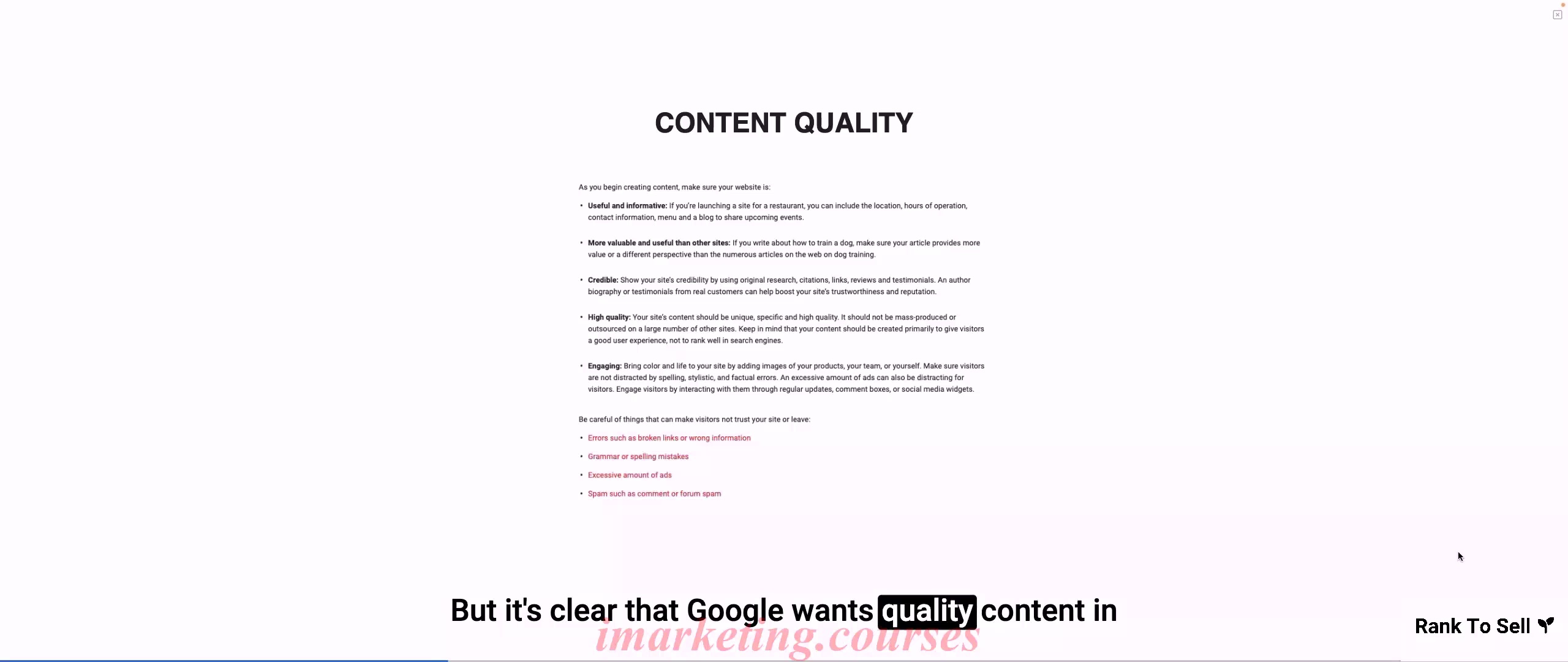

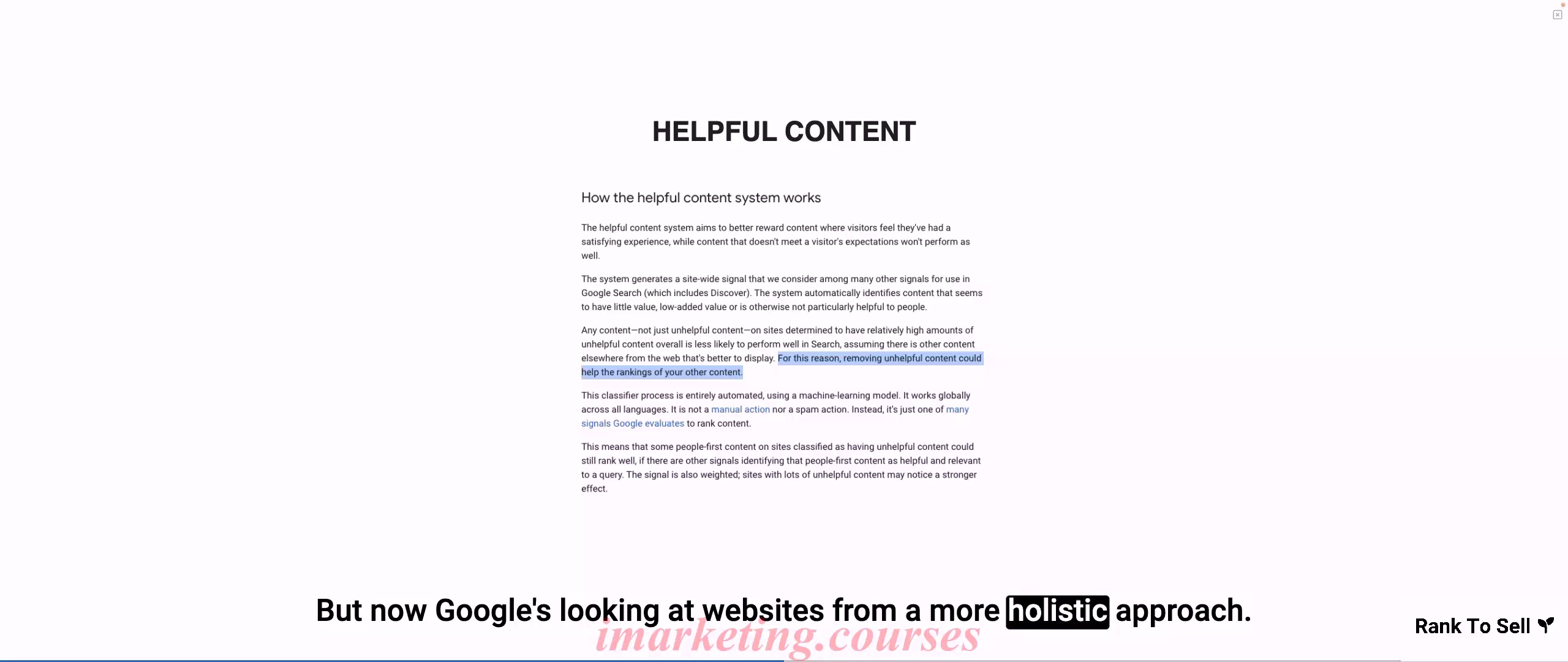

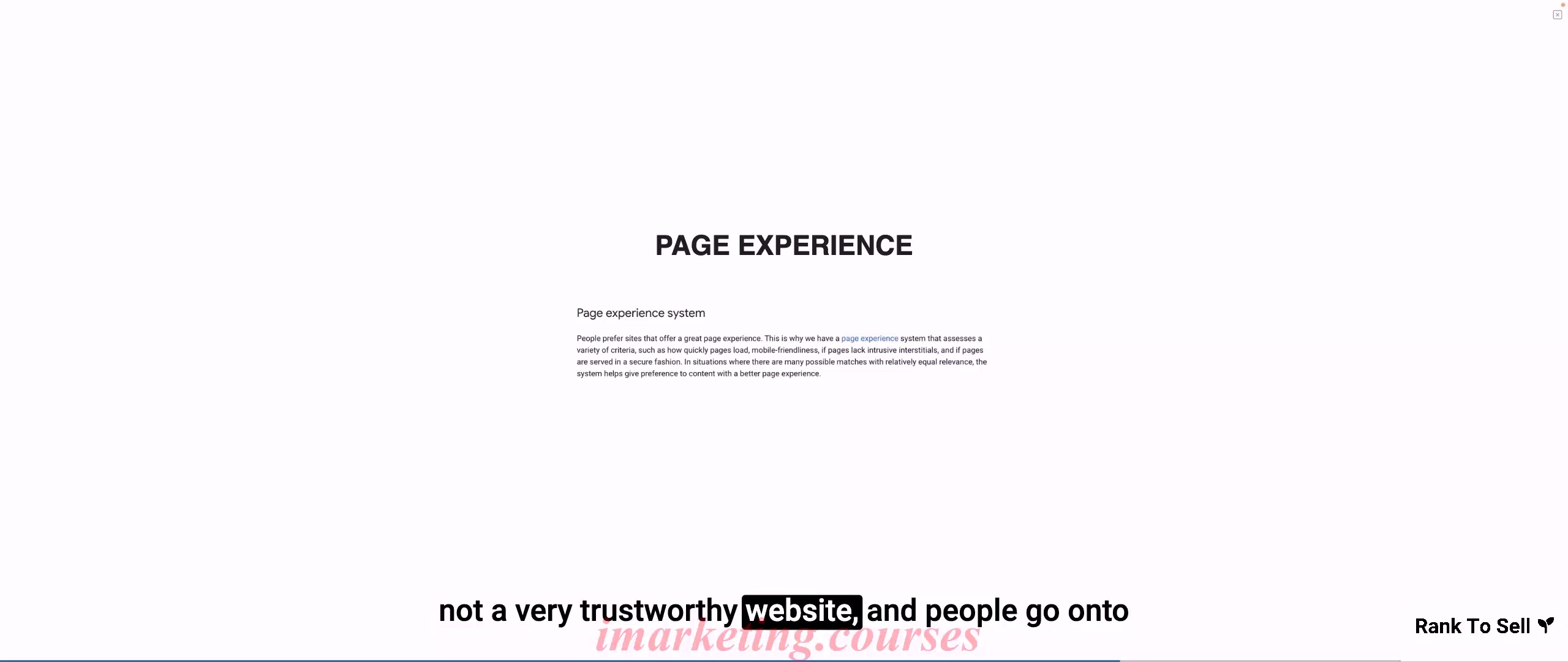
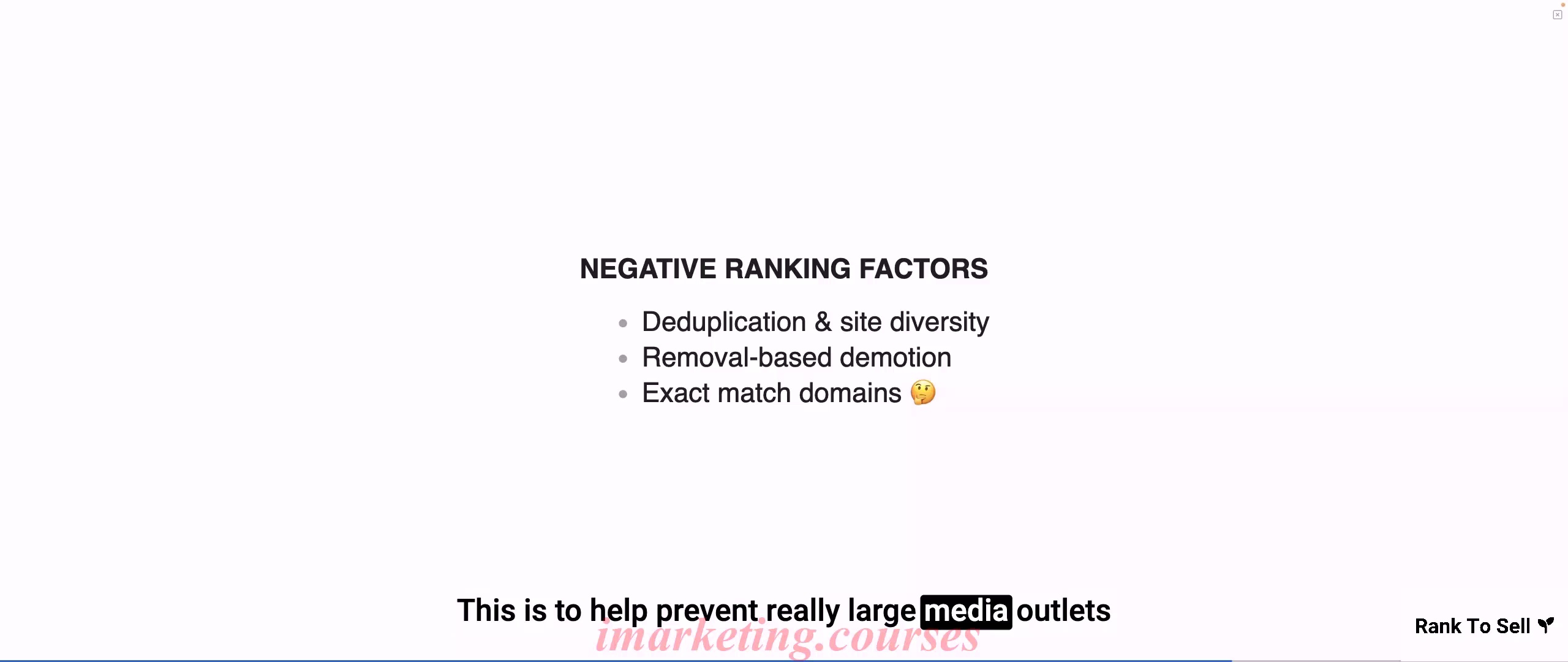
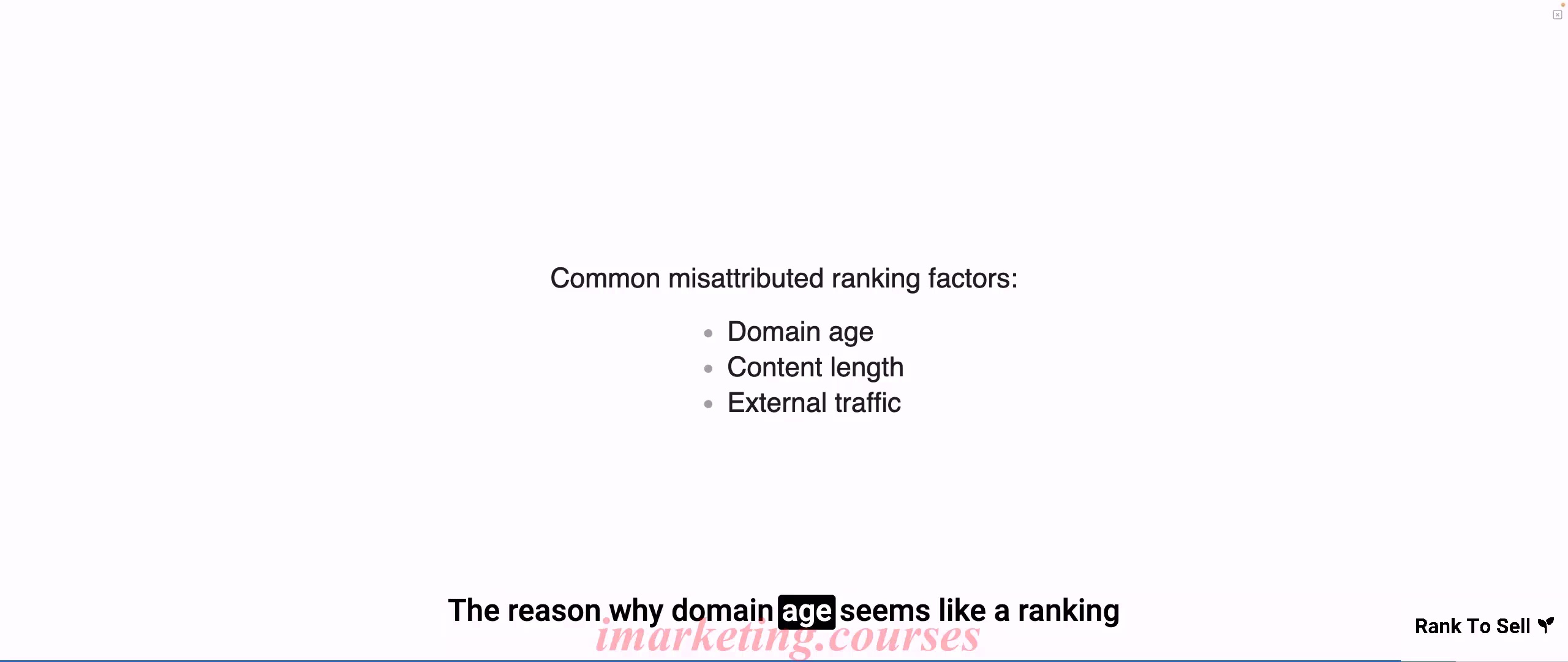
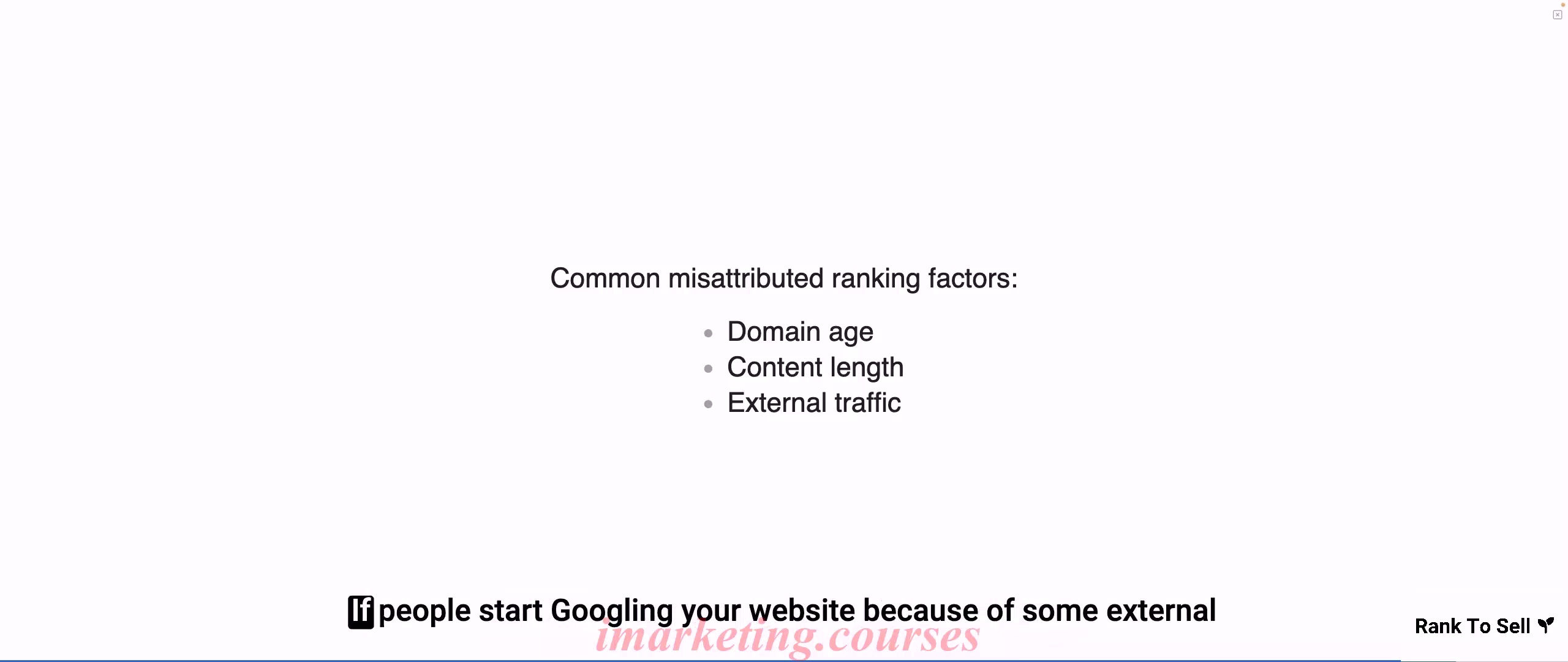
The narrator explains the difference between ranking factors, which directly impact search rankings, and trust signals, which indirectly impact rankings. Key ranking factors include: content quality, keywords, backlinks, helpful content, original content, passages, and page experience.
Trust signals like backlinks and traffic can indirectly influence ranking factors over time. However, factors like domain age, content length, and external traffic do not directly correlate with rankings, despite common misconceptions.
The goal is to build trust with Google by providing high-quality, original, helpful content so searchers have a good experience. This leads to better rankings and more traffic long-term.
.Rank 2 Sell - pt1 5 to pt2 3 - Part 2










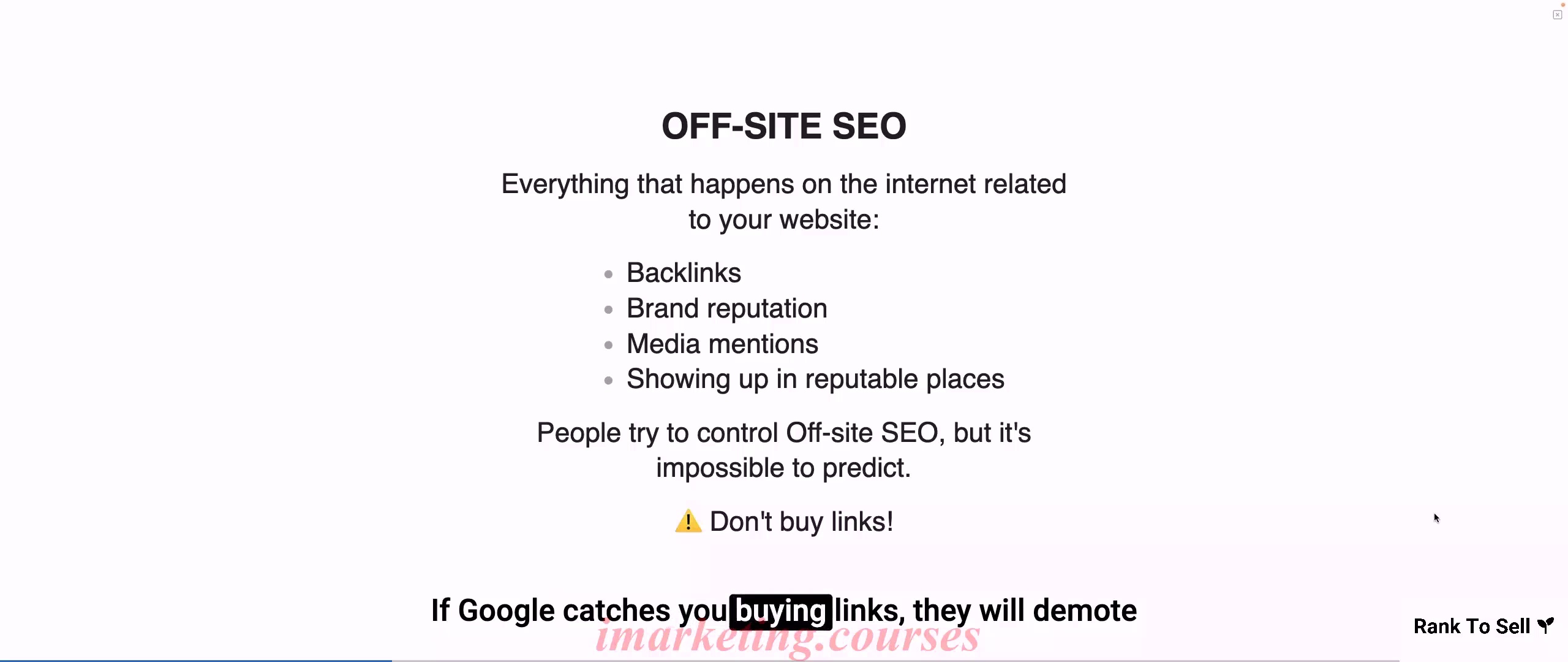
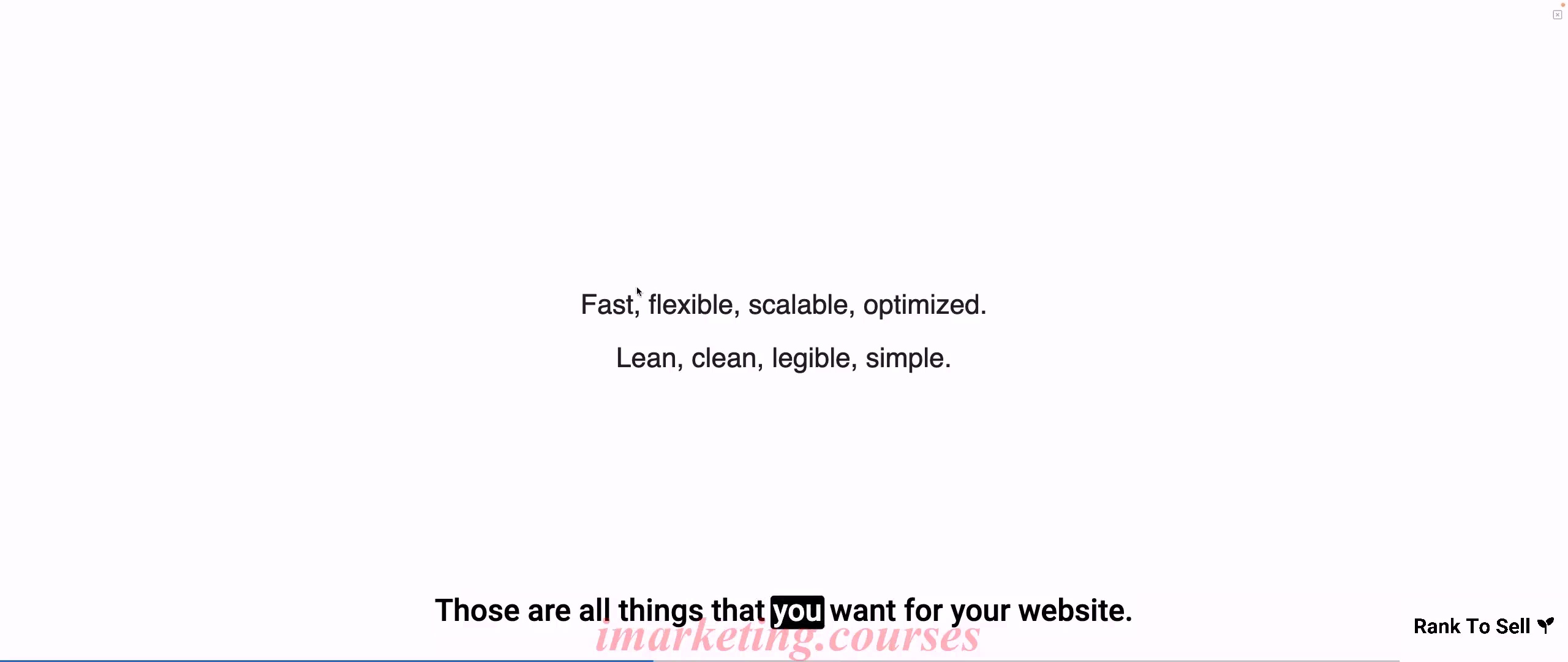
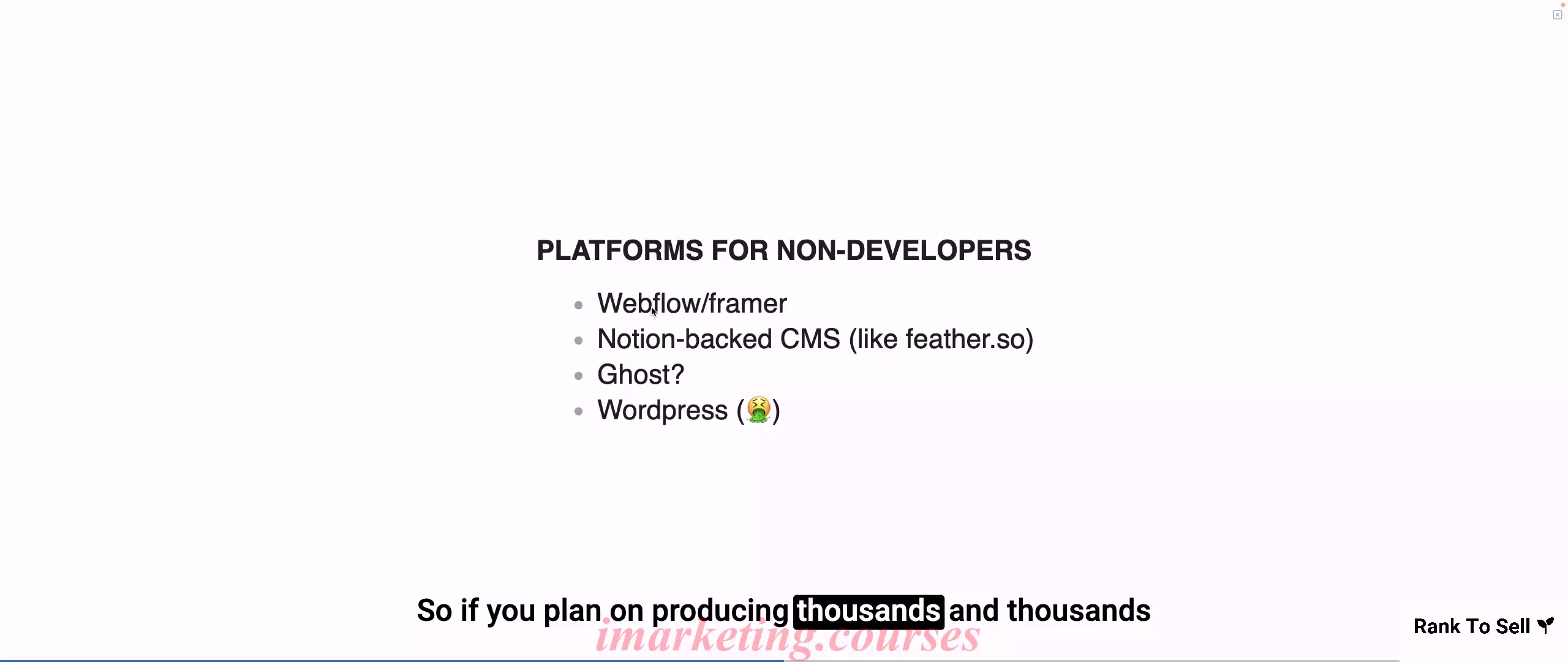
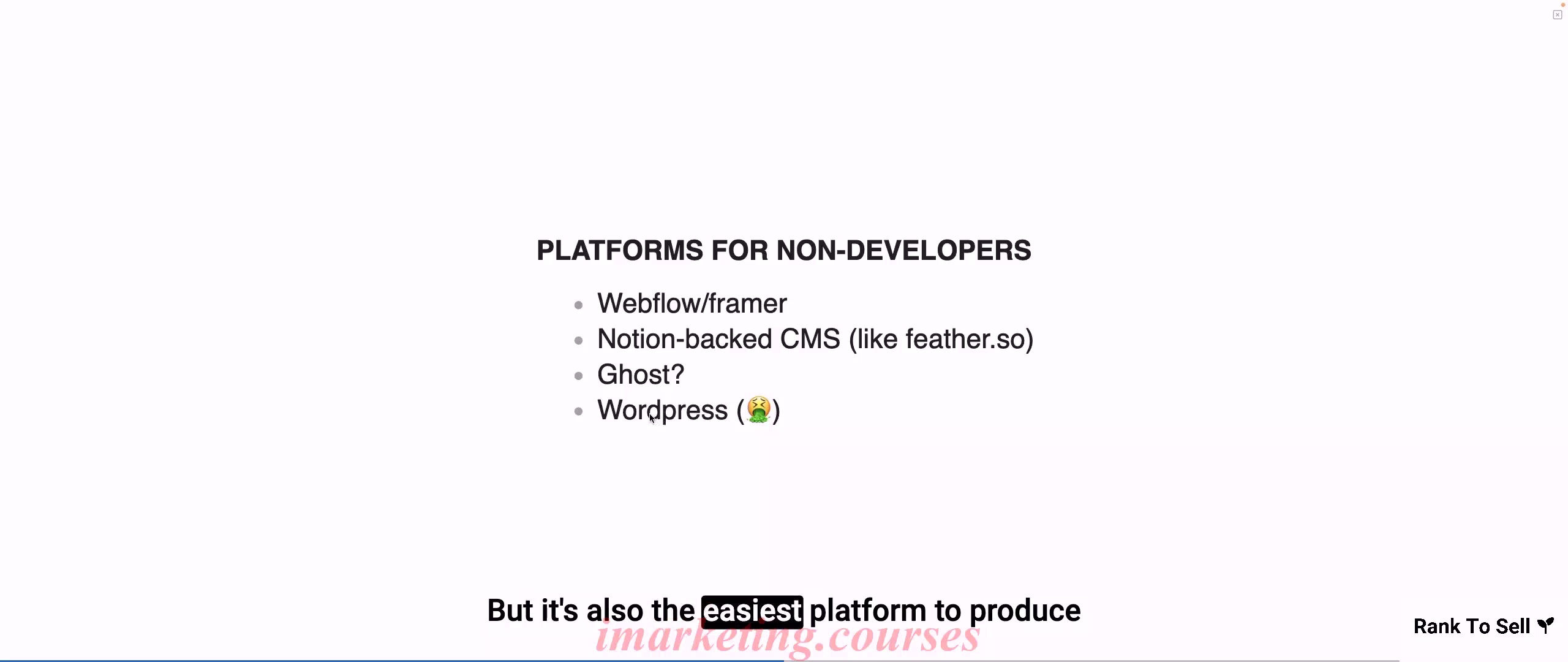
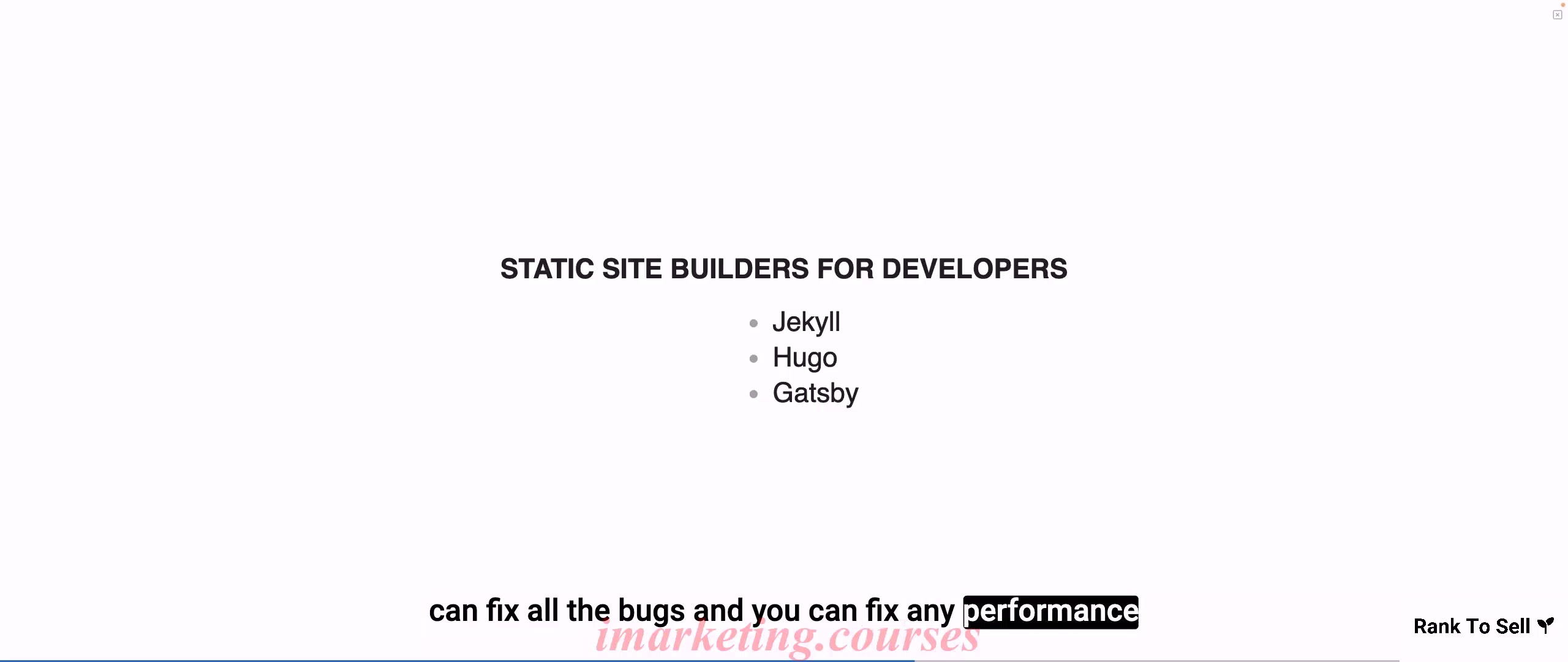
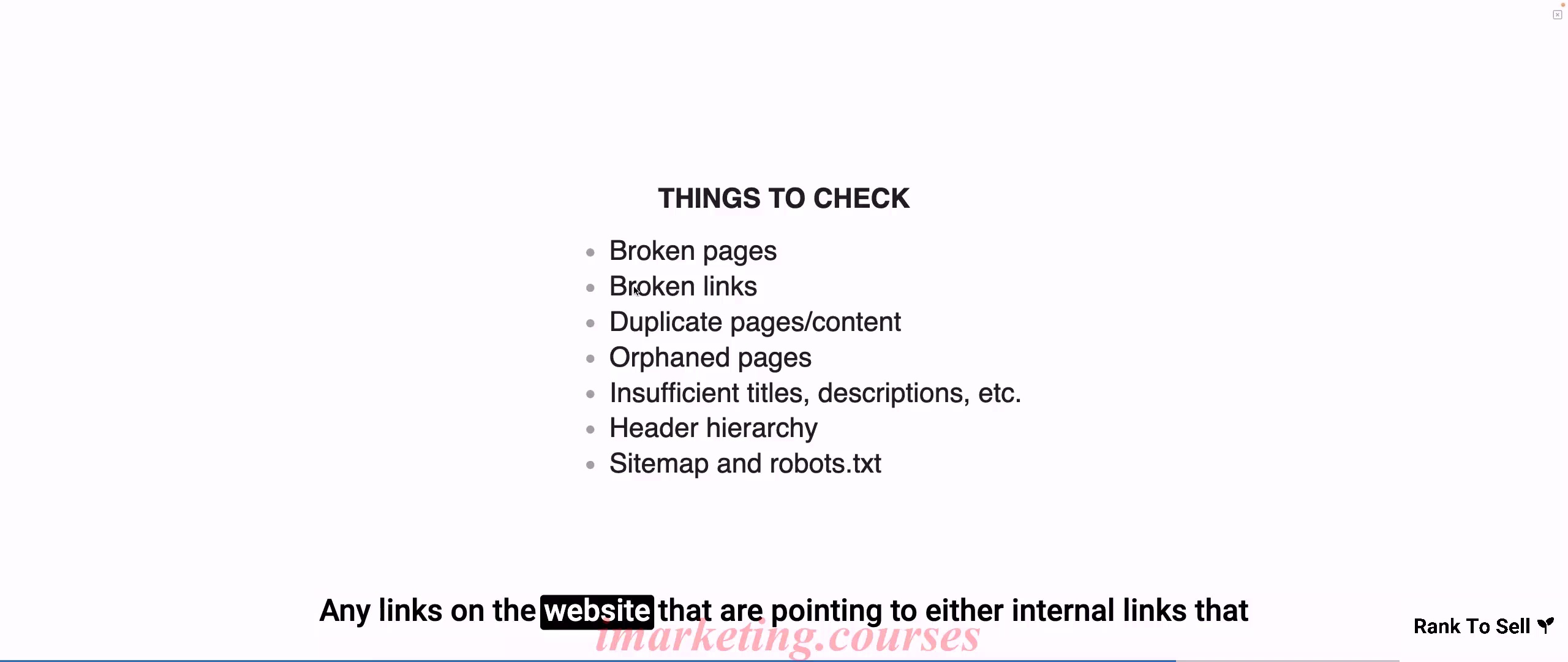
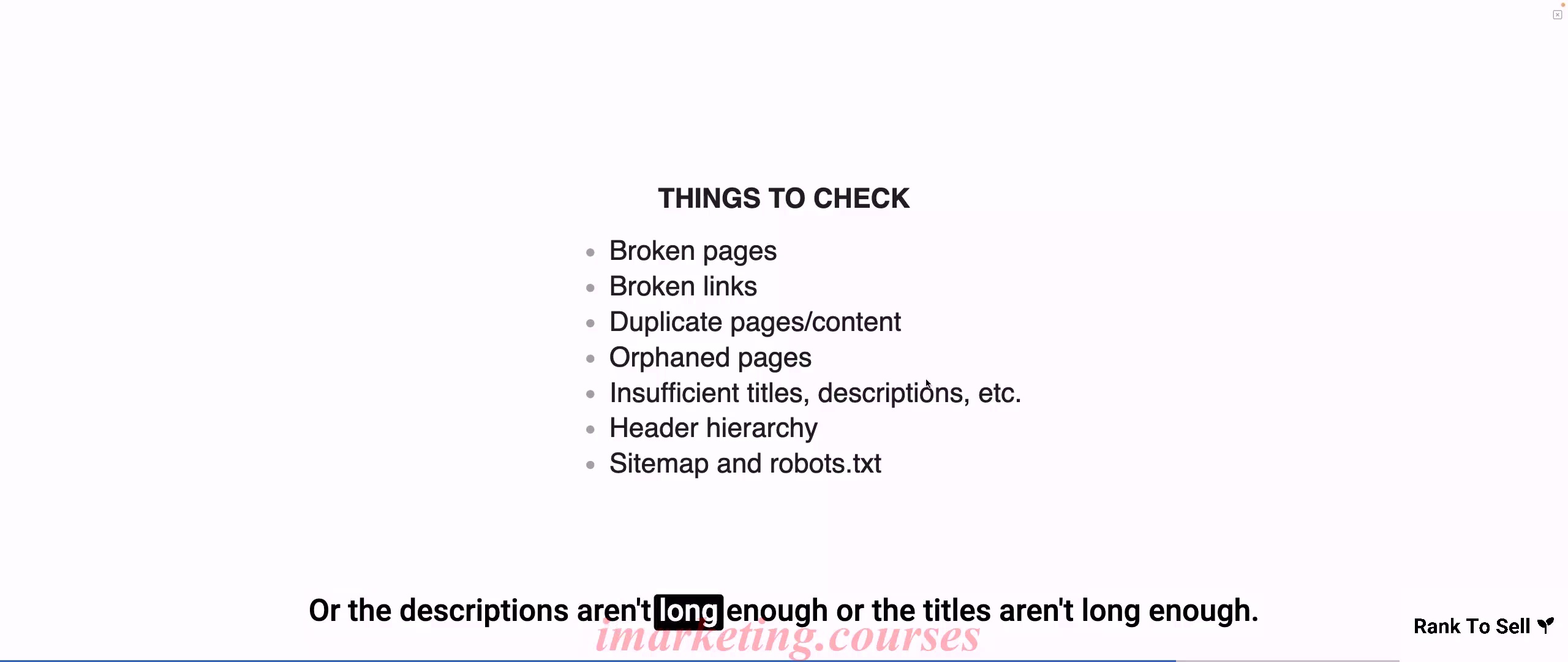
The narrator discusses on-site and off-site SEO. On-site SEO relates to aspects of your website you control, like speed, design, content. Off-site SEO relates to outside factors like backlinks. Do not buy links, as Google will demote your site. Good website performance, including fast load times and scalability, improves user experience which Google values.
For design, aim for a website that is lean, clean, legible and simple. The narrator recommends Webflow, Framer, Notion-backed CMS sites, and static site generators for developers. WordPress is popular but can easily become bloated and rank poorly.
When auditing a site, check for broken links, duplicate content, orphan pages without inbound links, insufficient titles and descriptions, header hierarchy issues, site maps, and robots.txt files. Also consider user experience like text size, contrast, working links and images, and calls to action.
Use tools like Ahrefs, SiteChecker, and PageSpeed Insights to audit technical and user experience issues. The Google Search Console also warns of crawl errors.
.Rank 2 Sell - pt1 5 to pt2 3 - Part 3


















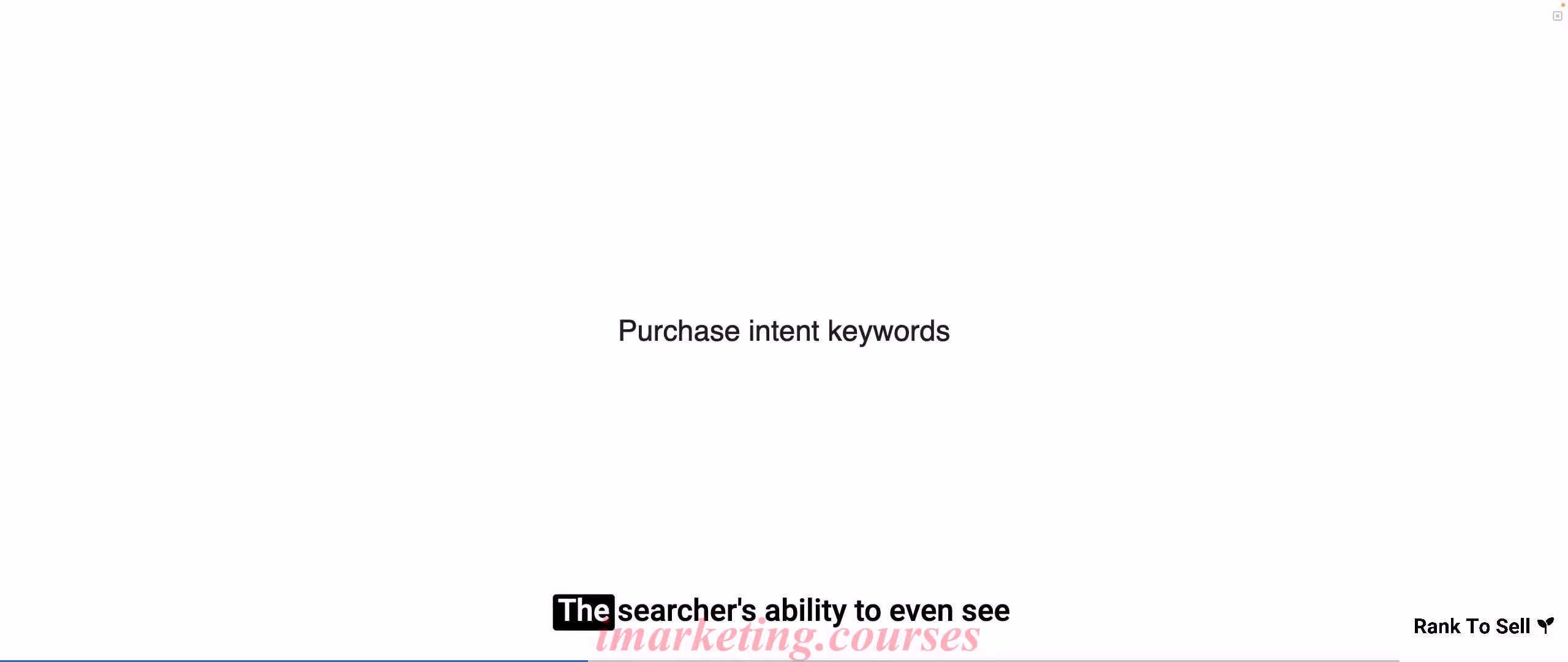
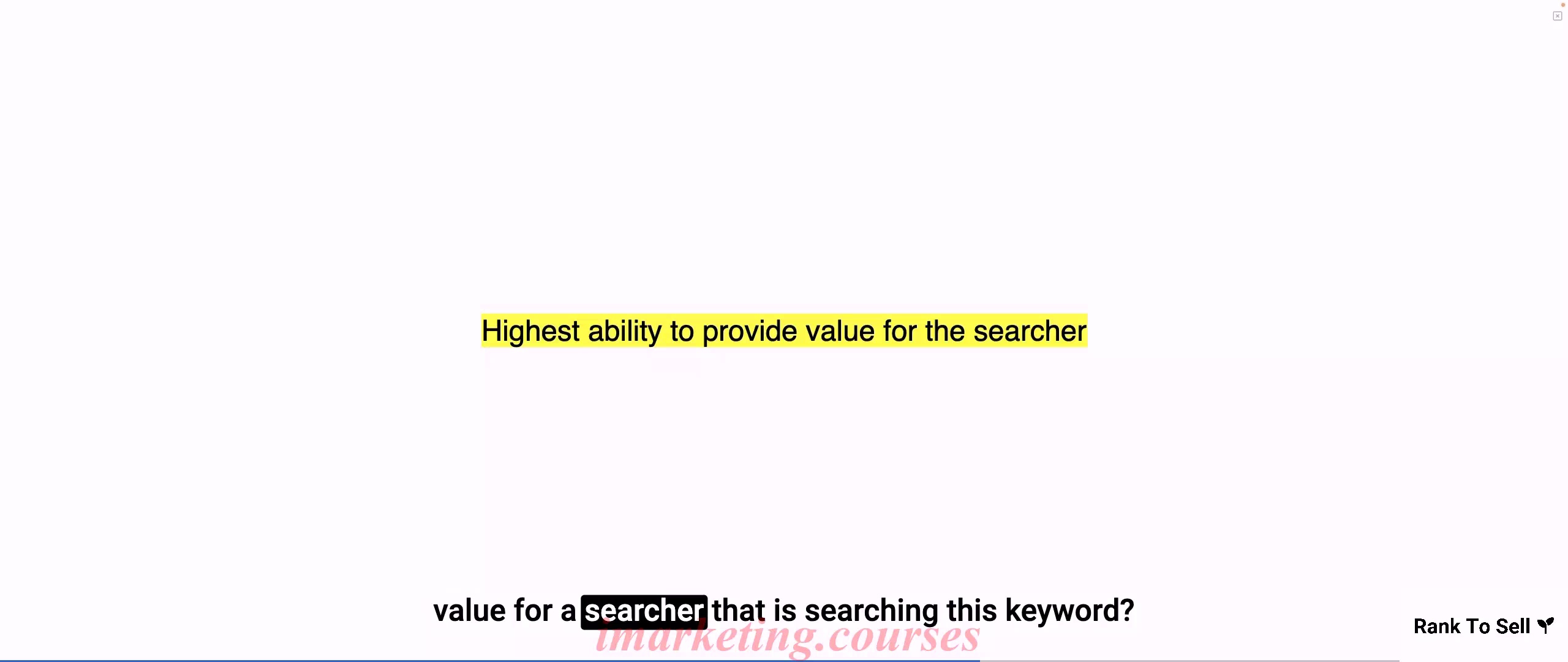
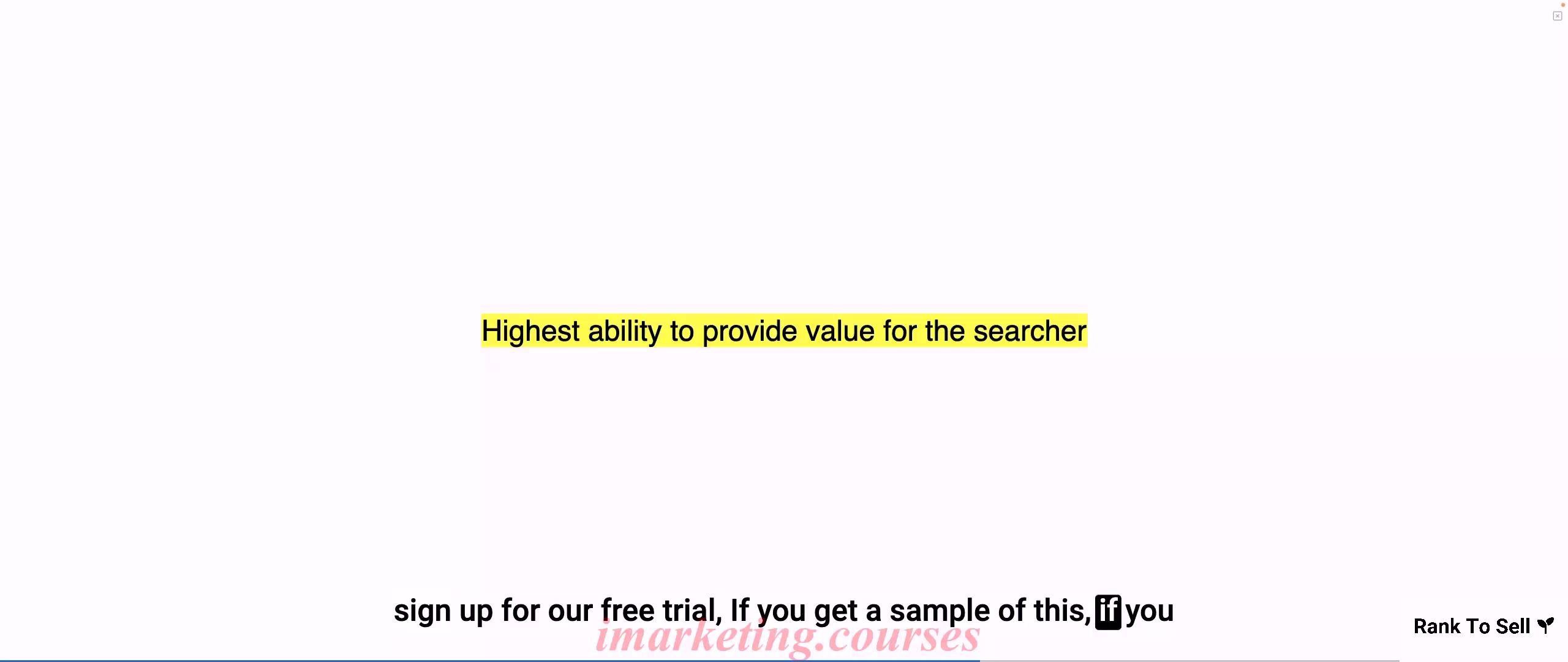

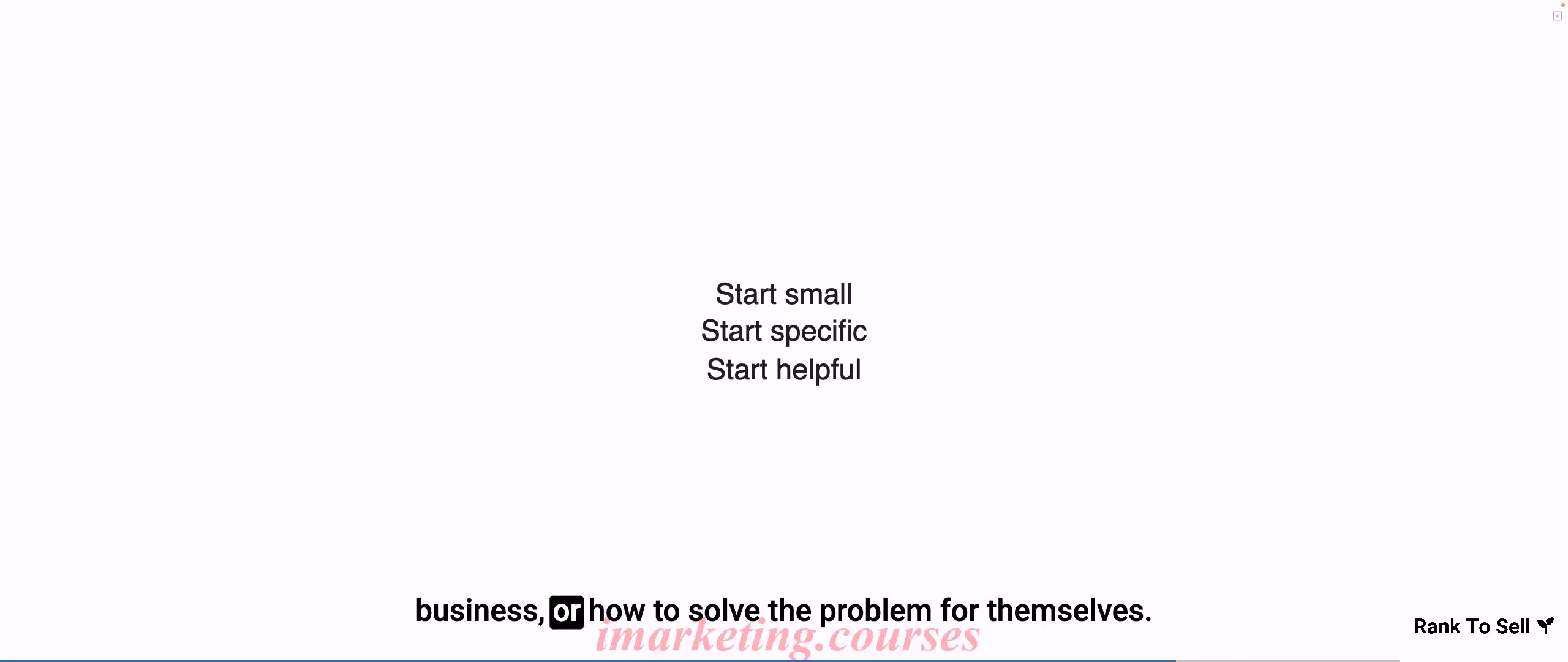
The narrator discusses different keyword research philosophies used by SEOs. Some focus on ranking for ultra-competitive keywords, while others only care about high-conversion keywords. A third group targets only easy-to-rank keywords with high volume but low value.
The narrator's philosophy is to find keywords where you can provide the most value to searchers. This means having unique skills and insights to offer solutions to their problems, not just focusing on volume. The goal is to provide helpful information, then show how your product or service is the best solution.
The strategy is to start small - targeting long-tail, specific keywords where you can create targeted content. This allows you to build domain authority and get links. Once you establish yourself as an authority, you can expand to more competitive keywords.
The key is not chasing quick home runs, but steadily building trust and value for searchers. This leads to consistent organic growth over time.
.Rank 2 Sell - pt1 5 to pt2 3 - Part 4
























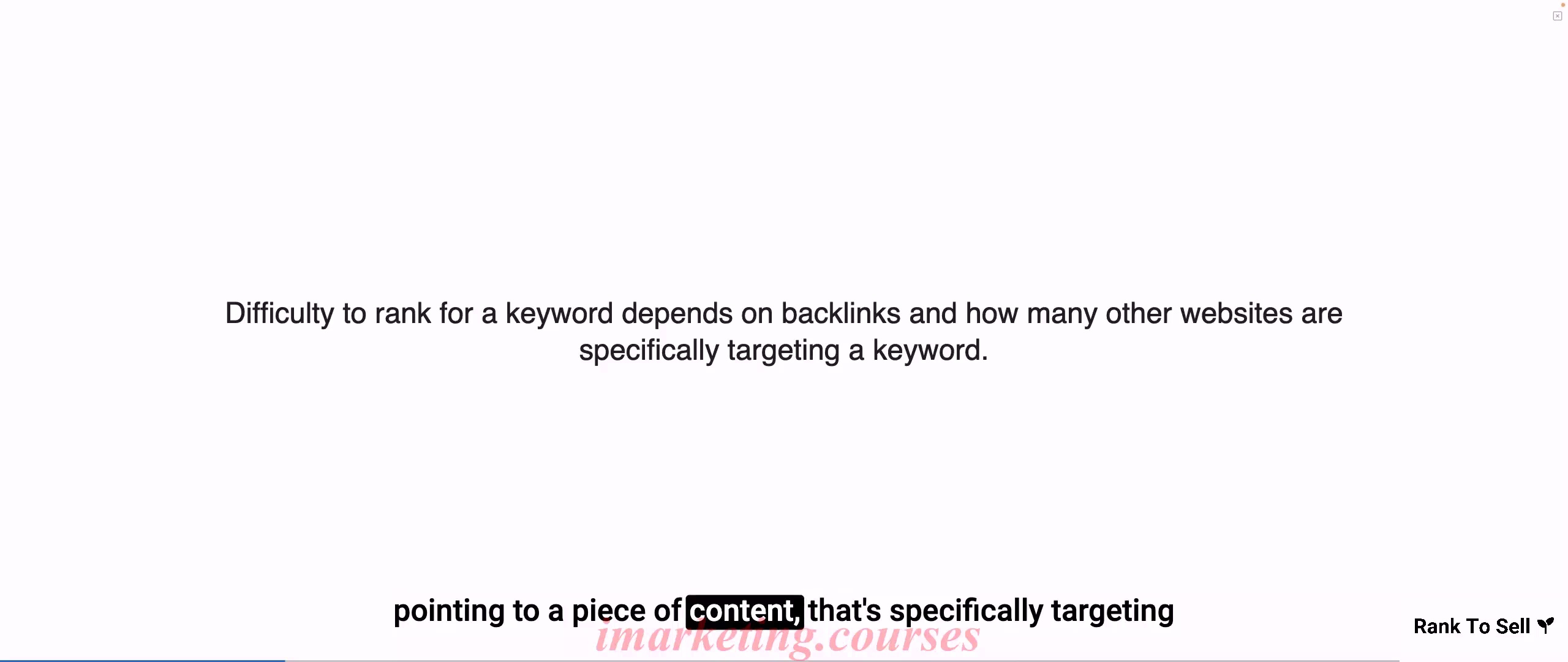
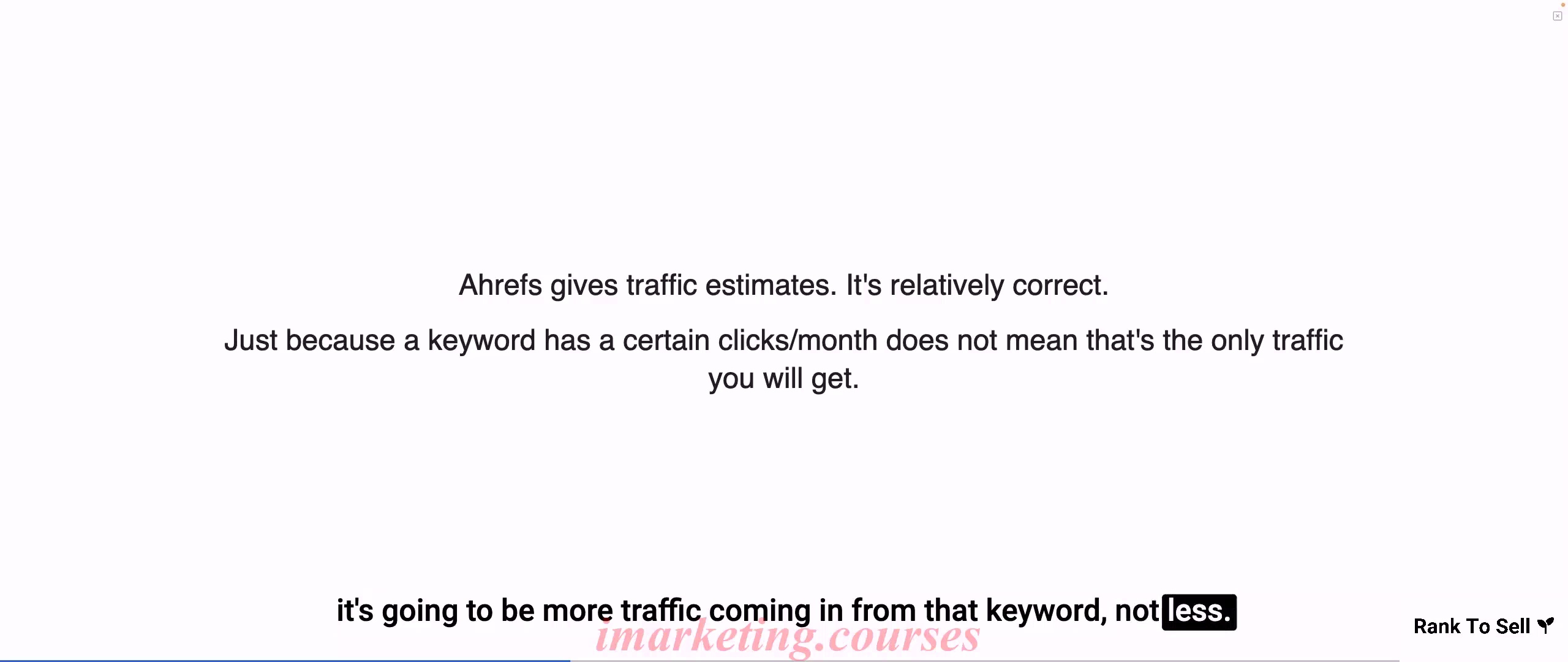
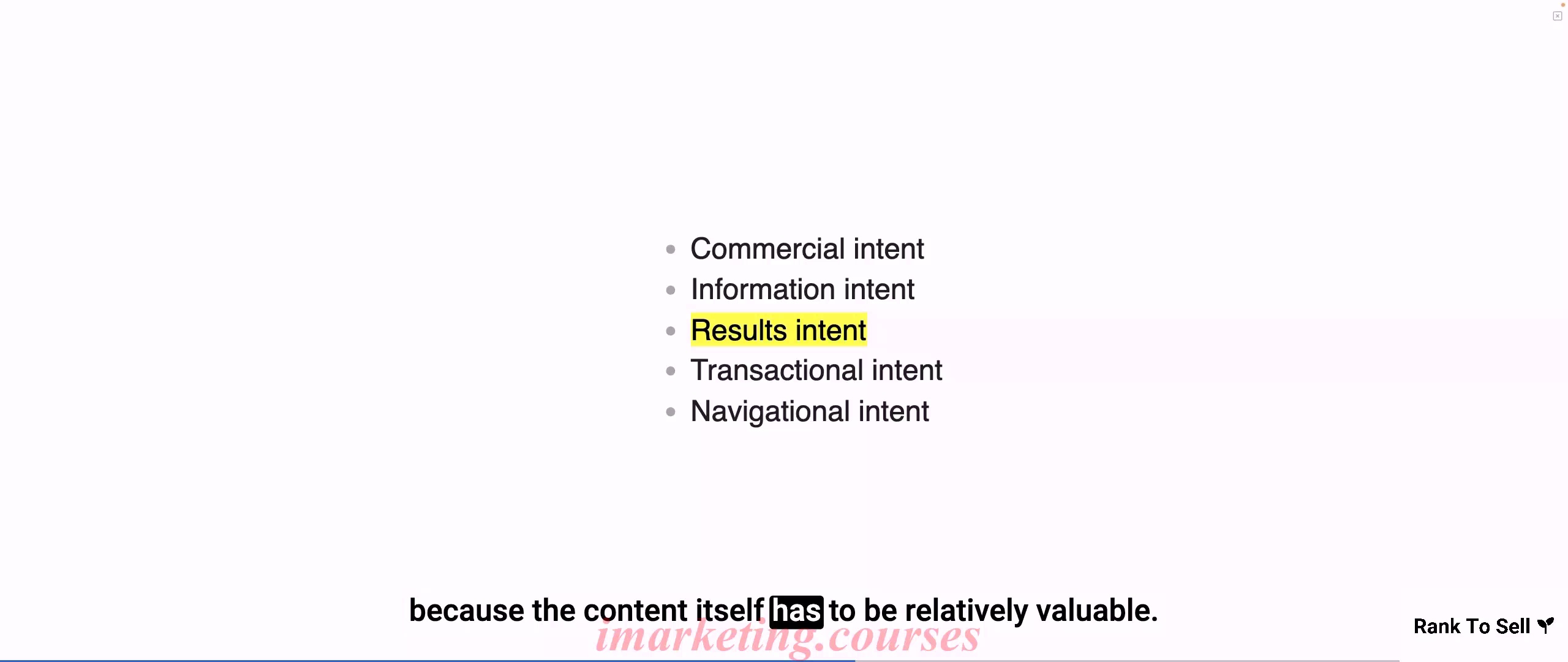
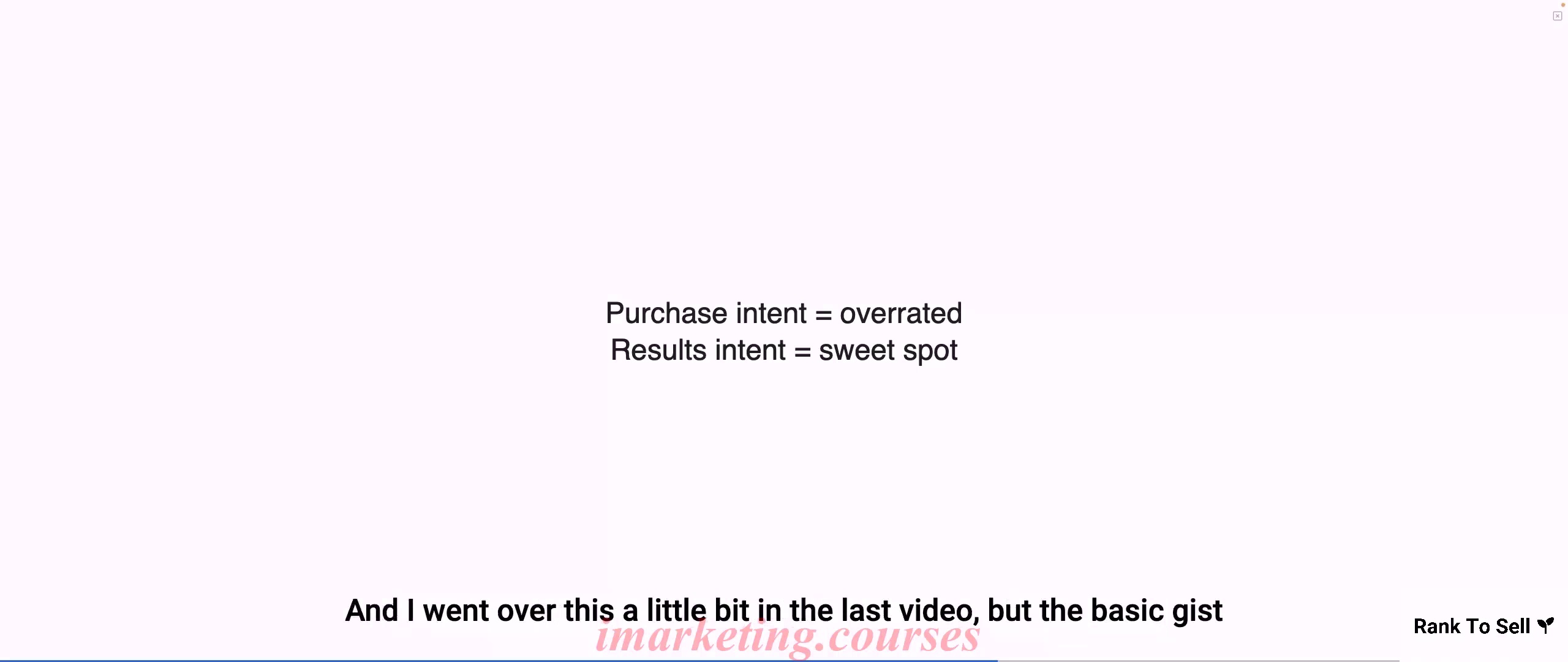
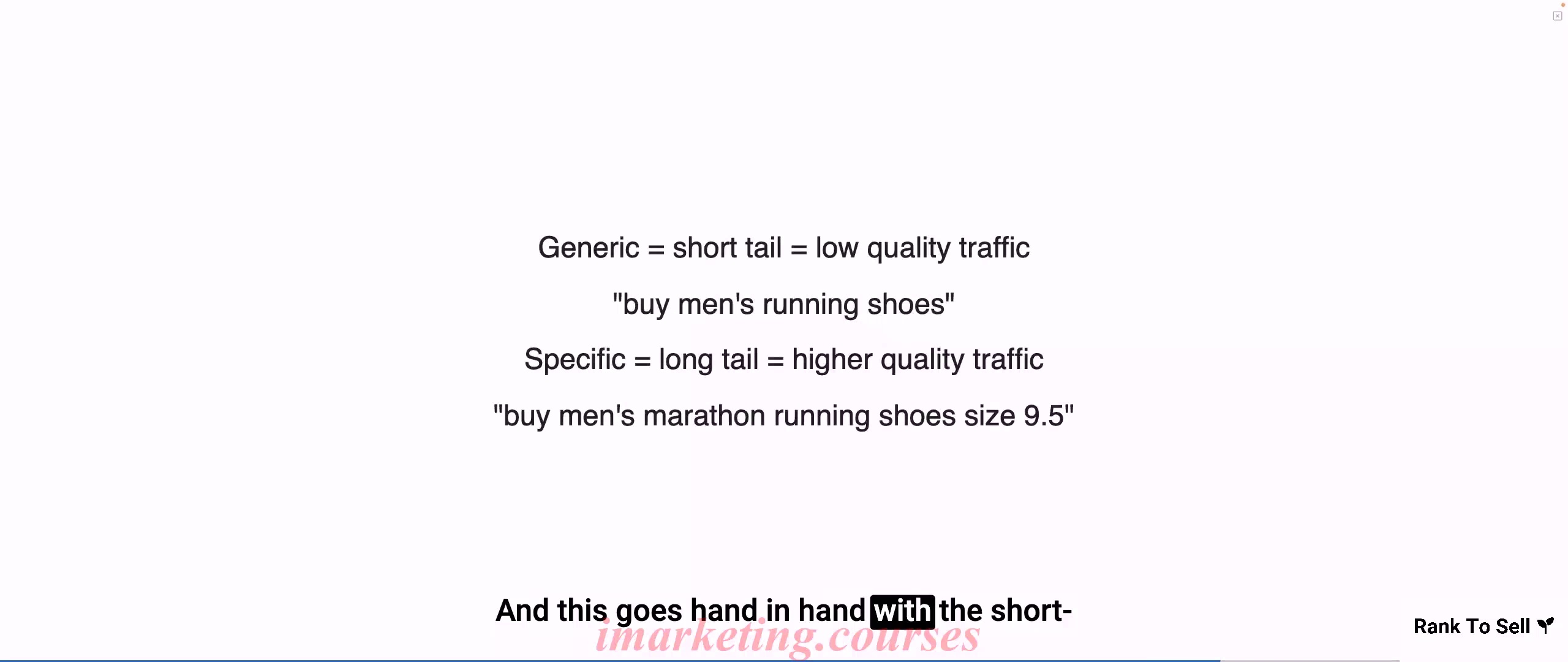
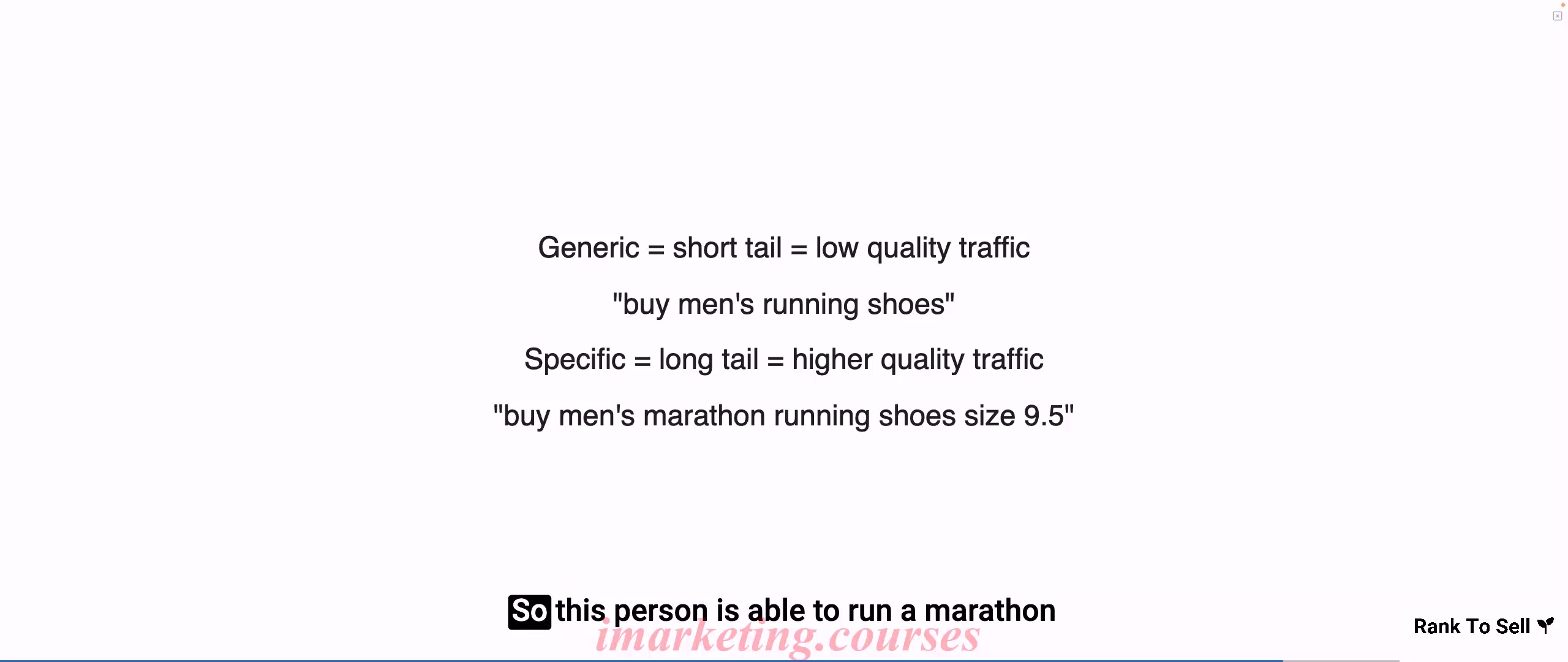
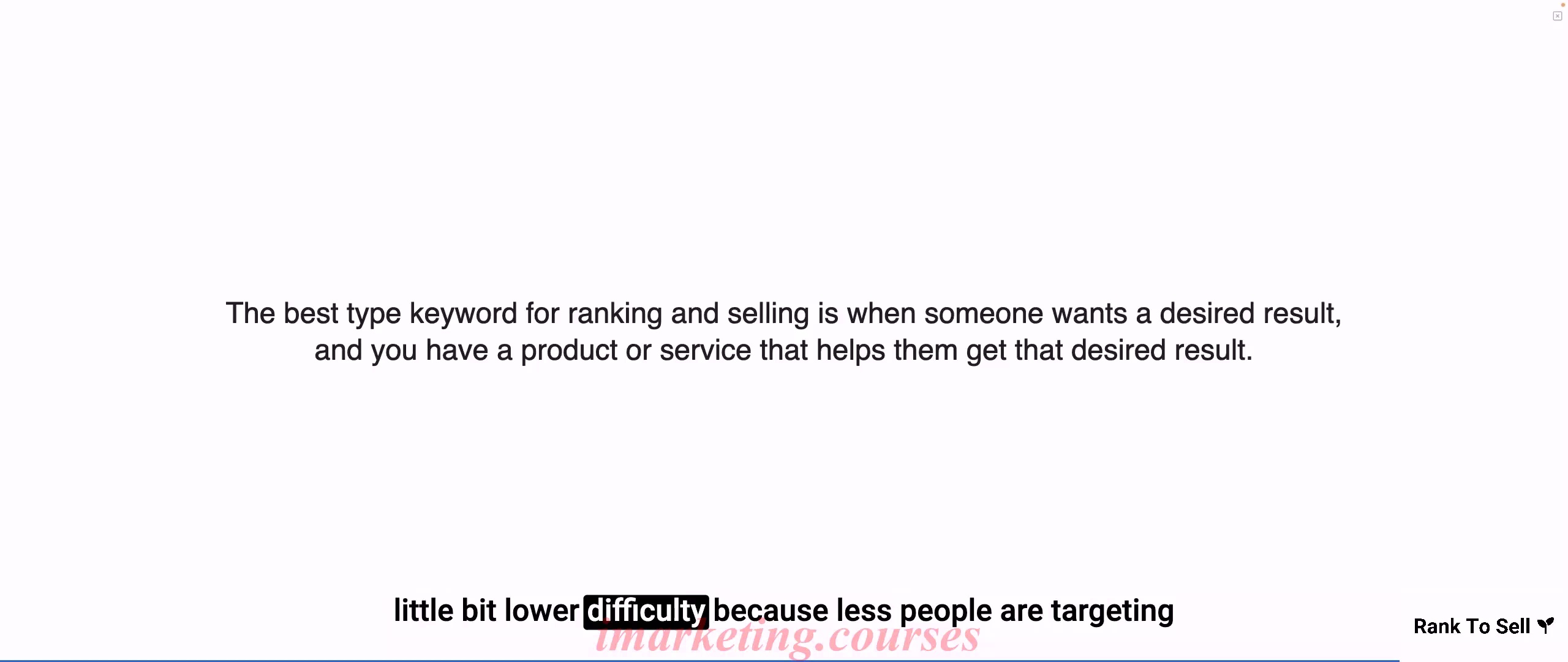
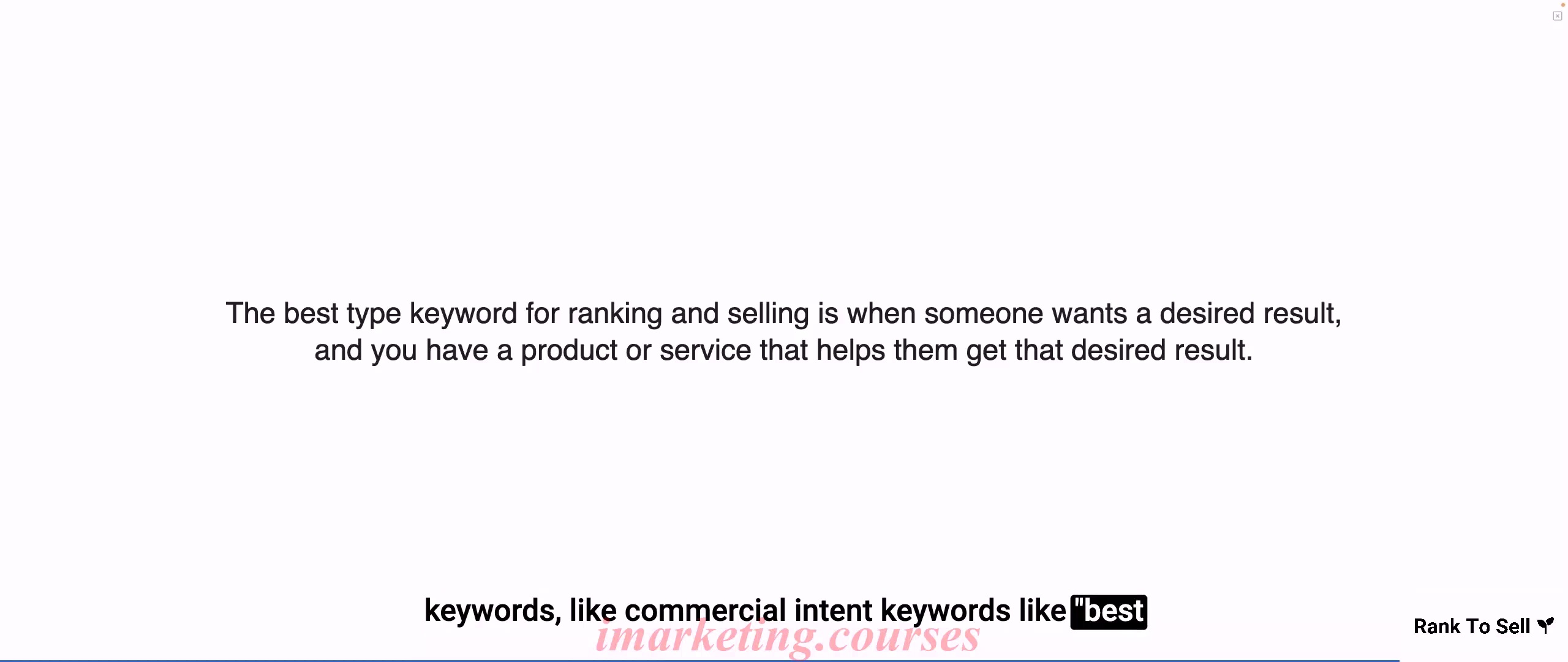
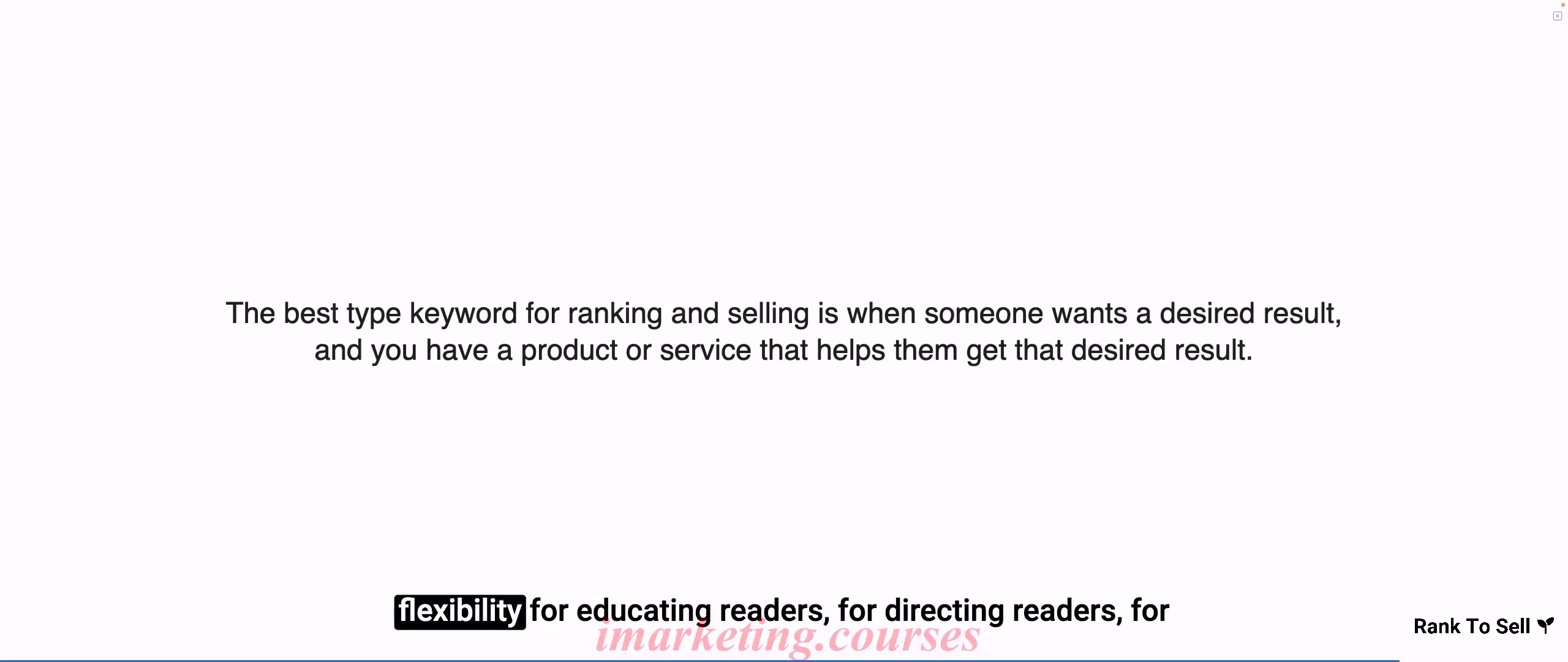
Keyword difficulty depends on backlinks and competing websites targeting the keyword. More difficult keywords have more sites targeting them and more backlinks pointing to content for those keywords. We want lower difficulty keywords we can rank for faster.
Keyword traffic estimates from Ahrefs are not perfectly accurate but give a general sense of relative traffic between keywords. Keywords showing traffic on Ahrefs likely have at least tens or hundreds of clicks per month.
There are several keyword intents: commercial, informational, results, transactional, and navigational. Results intent keywords, for how-to guides and processes, can provide high quality traffic. Purchase intent tends to bring lower quality traffic.
Keyword specificity brings higher quality traffic. More specific "long tail" keywords allow you to better serve users' precise needs. Generic "short tail" keywords tend to attract random low quality traffic.
The best keywords help users accomplish a desired result, which allows you to present your product or service as the solution. This builds trust and lets you make your pitch in a subtle, non-marketing way.
.Rank 2 Sell - pt1 5 to pt2 3 - Part 5


































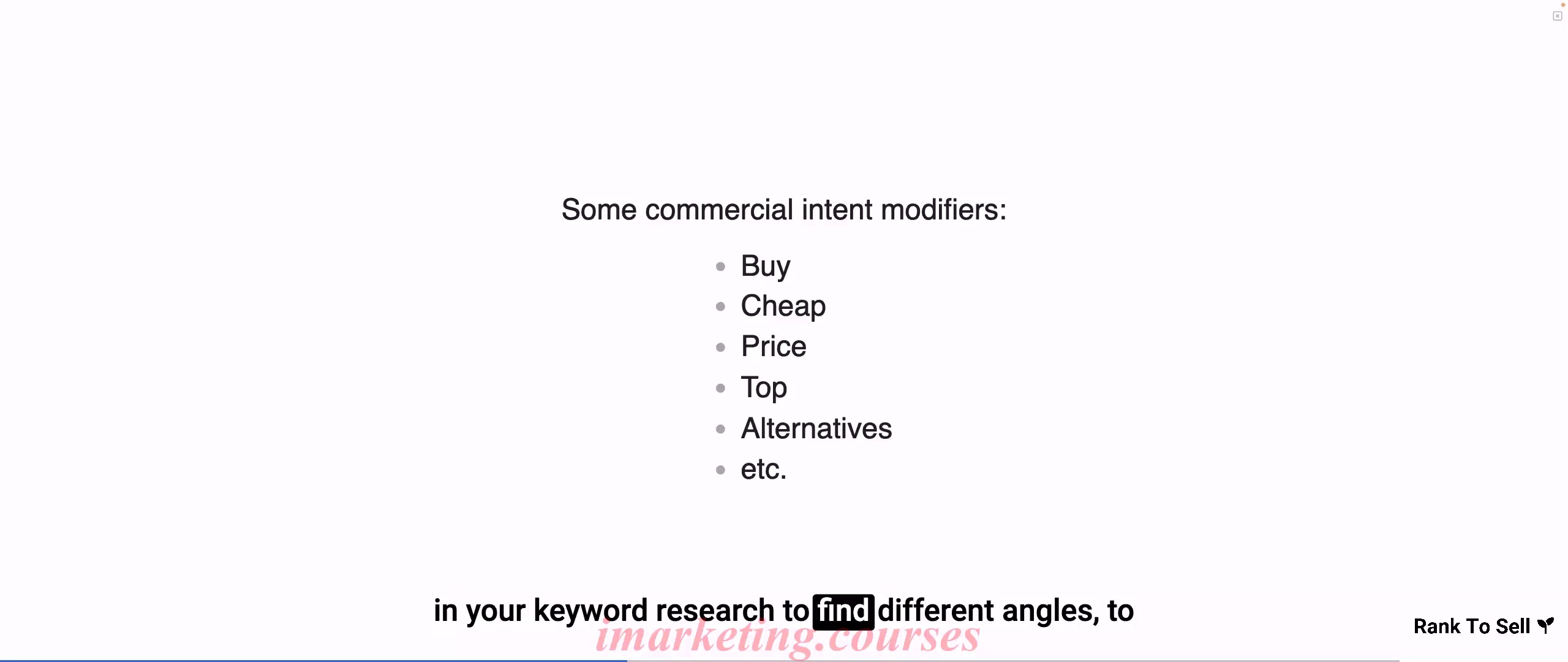
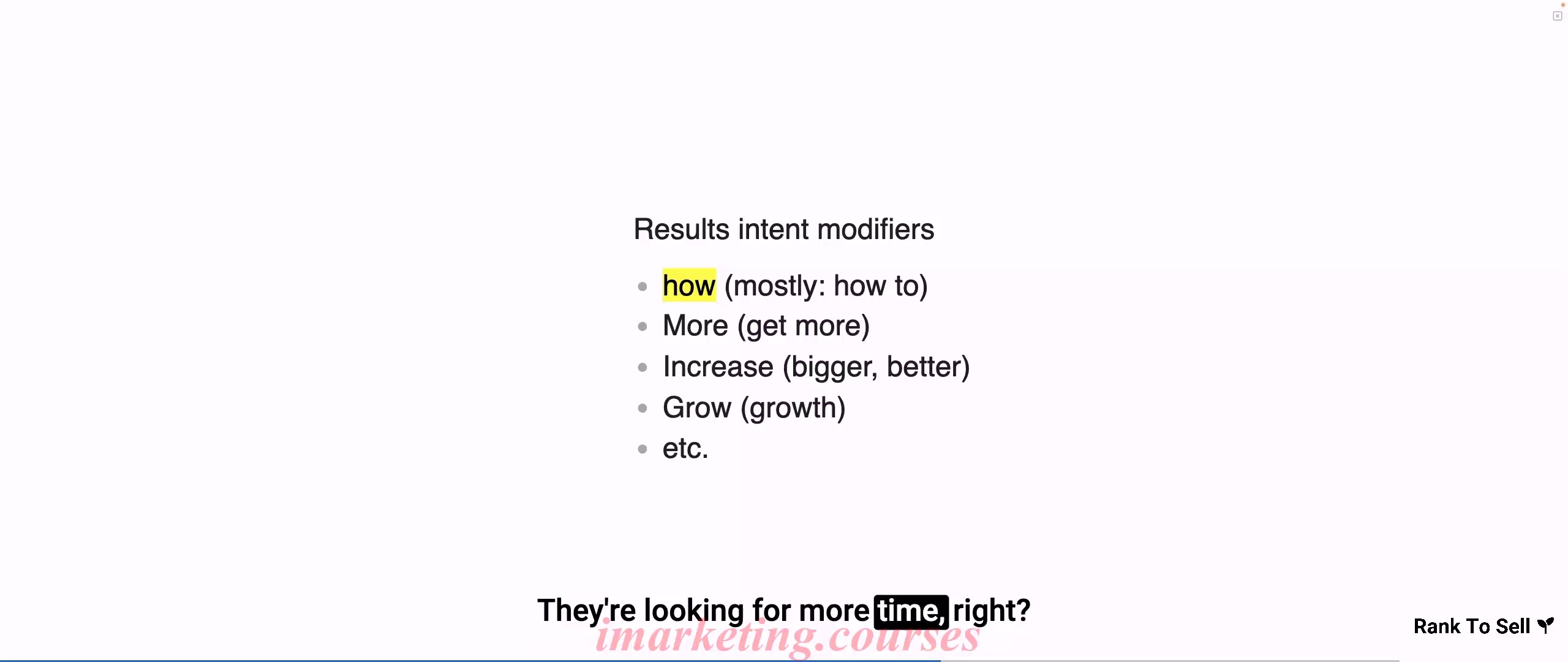
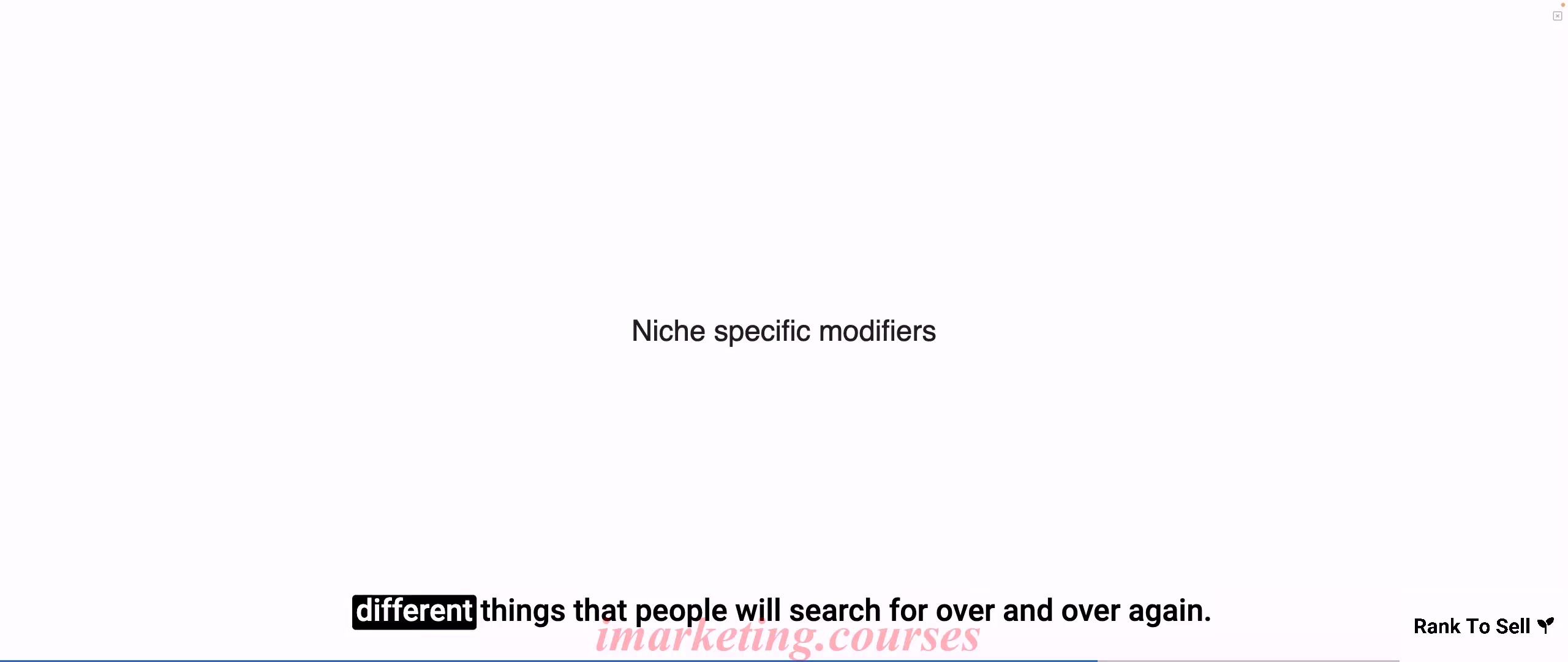

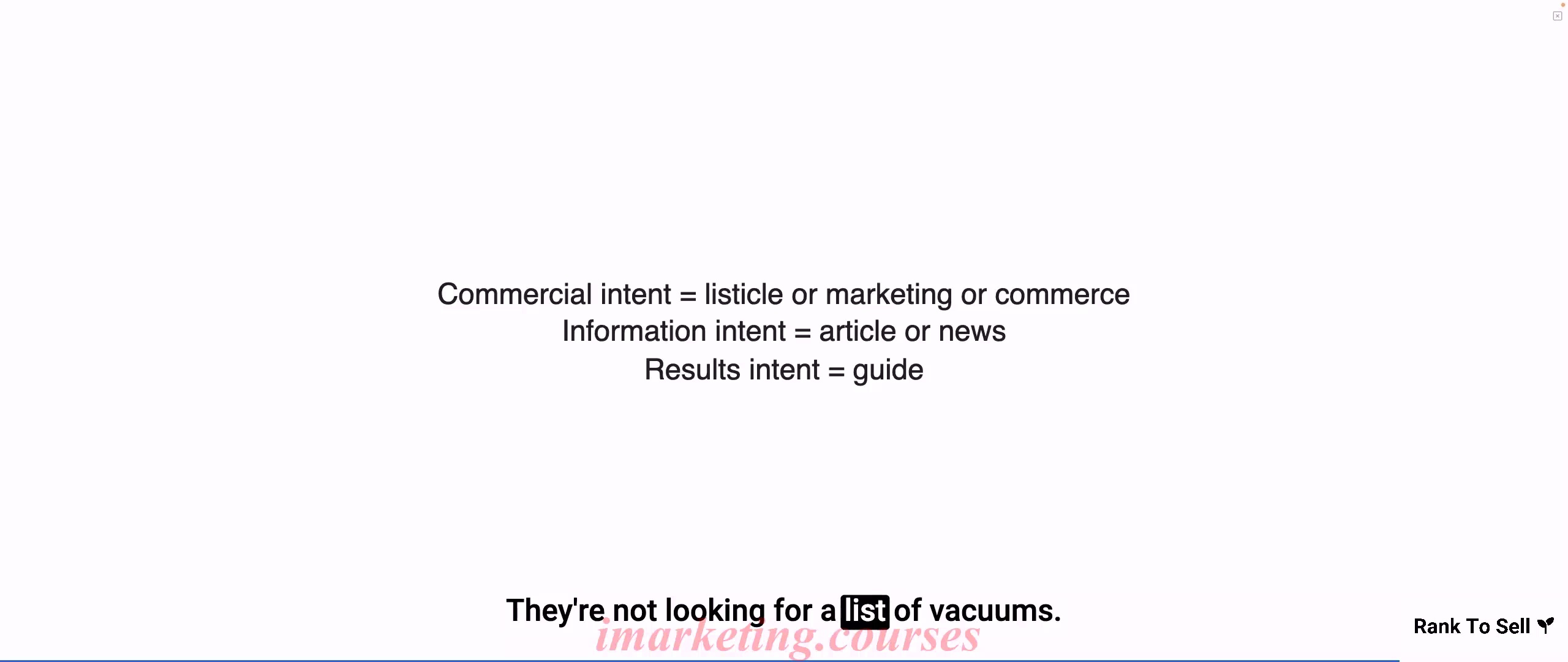
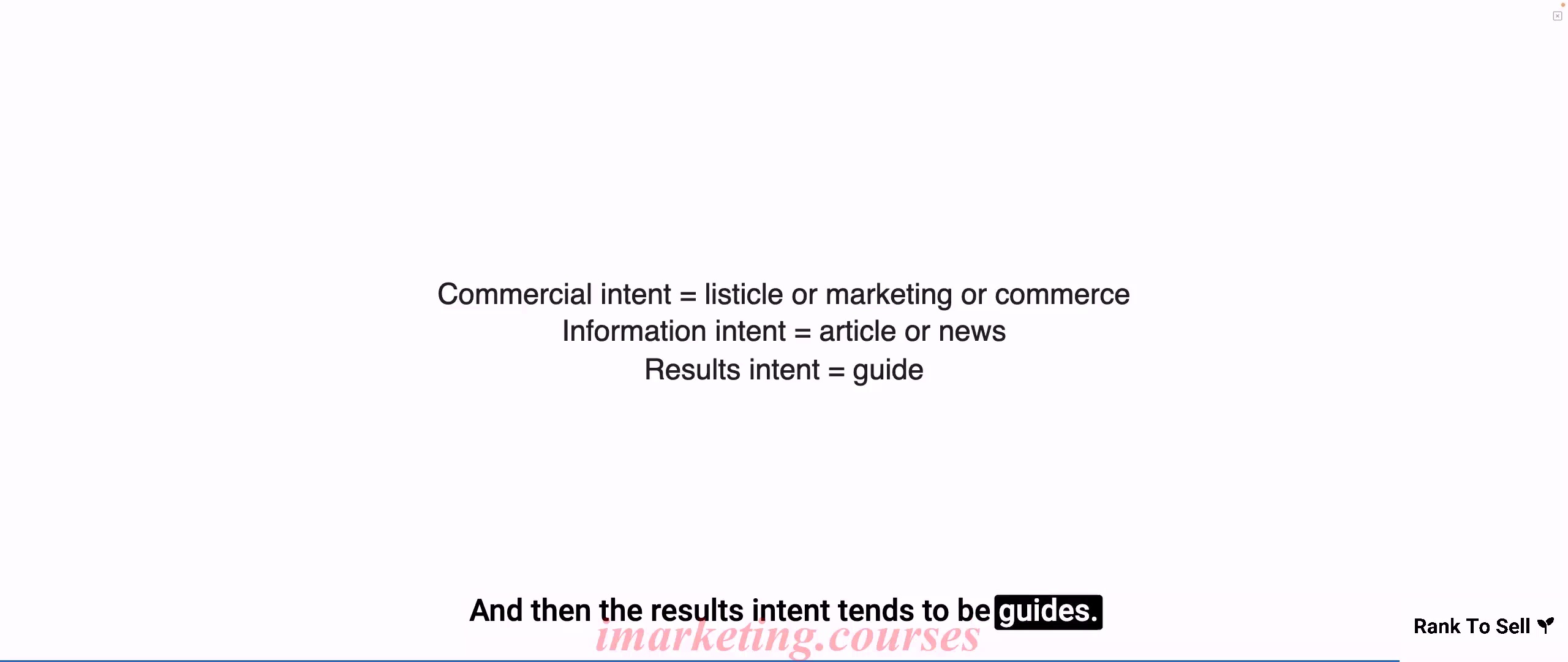
Keyword modifiers are commonly used words or phrases that make keyword research easier. Some examples are "best", "cheap", "top", etc. There are commercial, informational, and results intent modifiers. Commercial modifiers relate to buying things, informational refer to the 5 Ws (who, what, where, when, why), and results refer to "how-to" phrases.
There are different types of content: articles, guides, listicles, marketing pages, news, and commerce content. Each ranks well for certain keyword intents. For example, listicles often rank for commercial queries like "best vacuum", while guides rank for results-oriented "how-to" searches.
We will focus on creating guides to target results-driven keywords and bring in customers. However, other content like marketing pages and news articles can also drive traffic and links.
Video and images should not be overlooked either. YouTube ranks well in Google, and optimized images can also draw significant traffic.
.